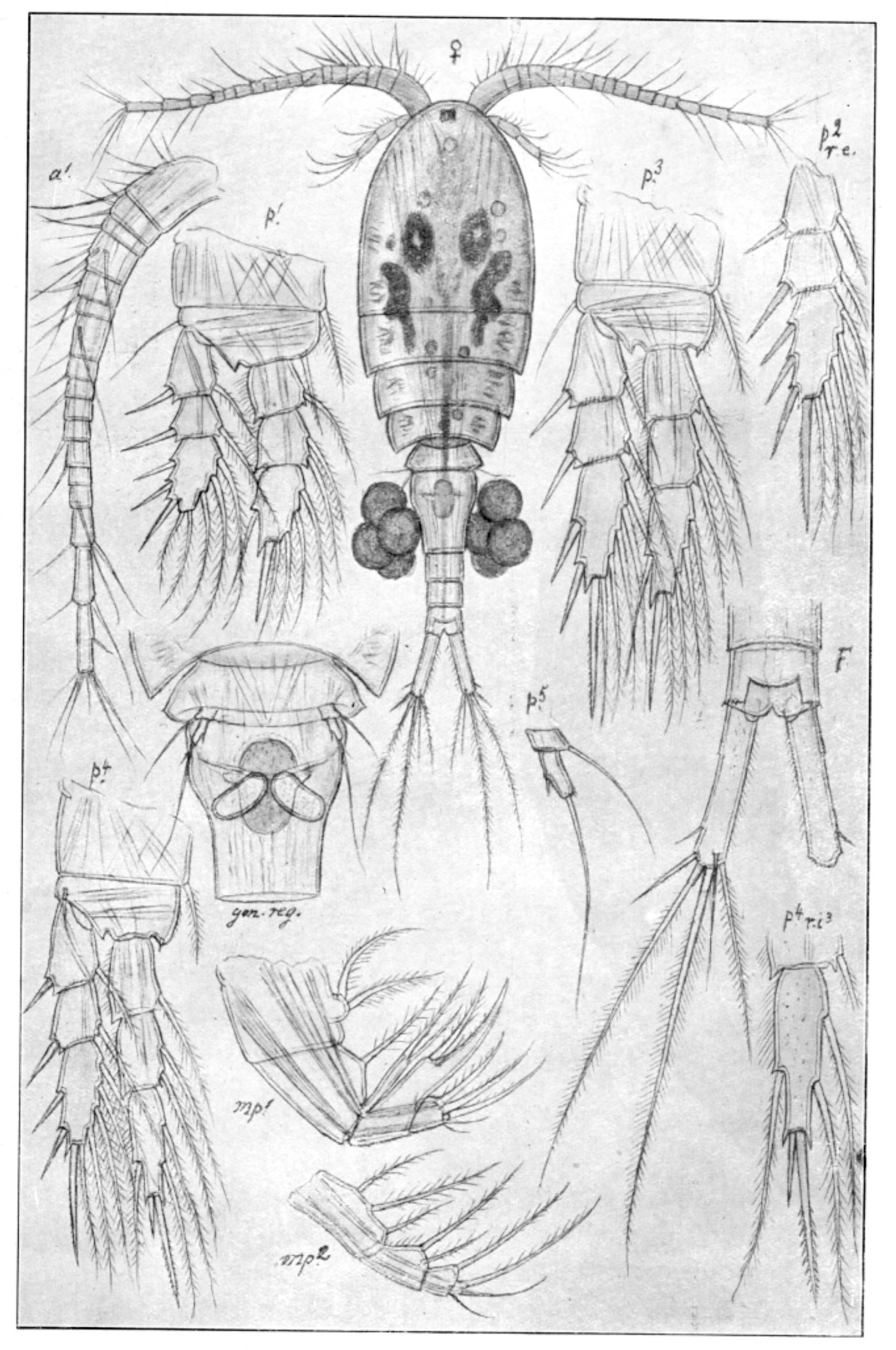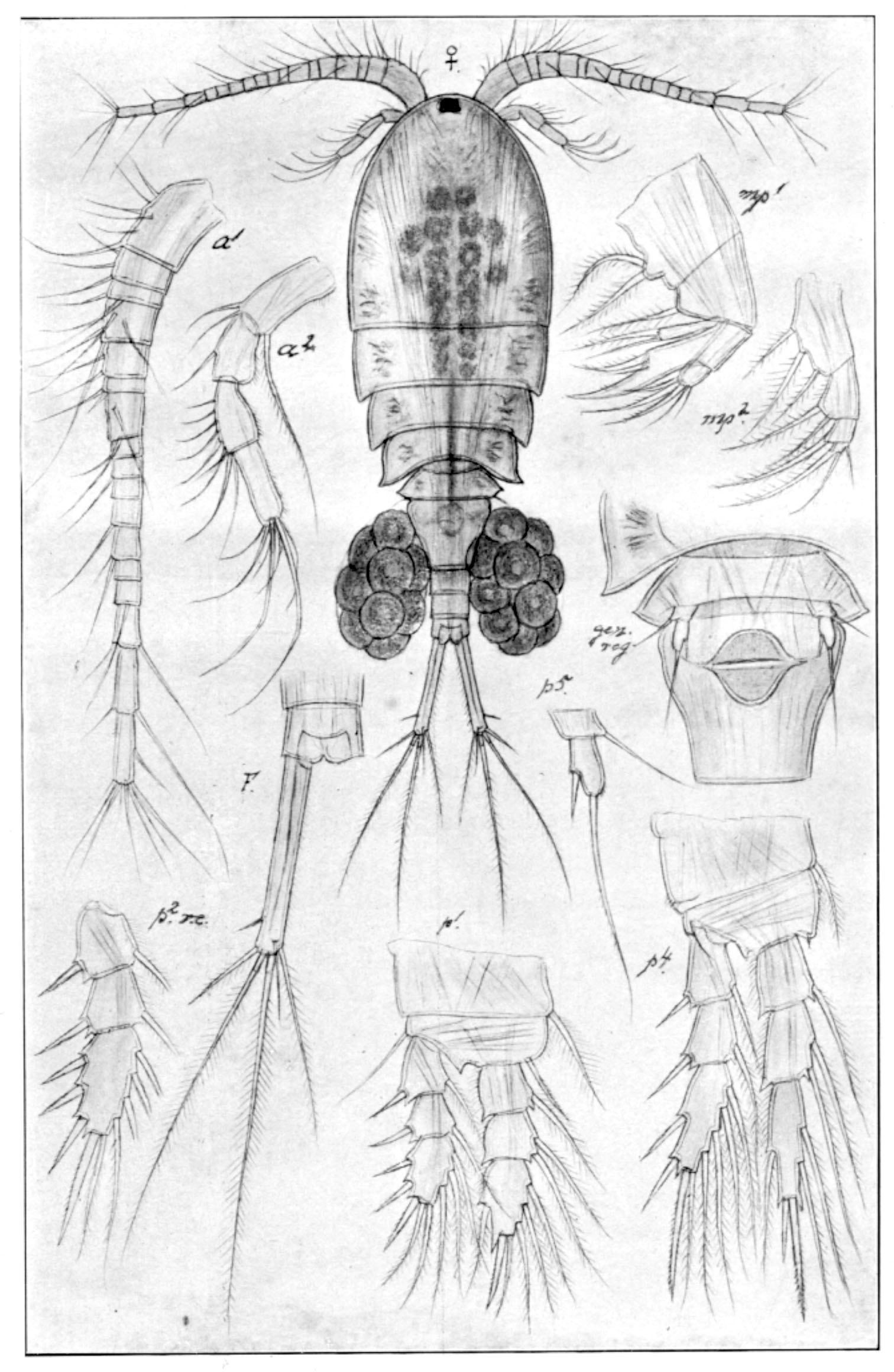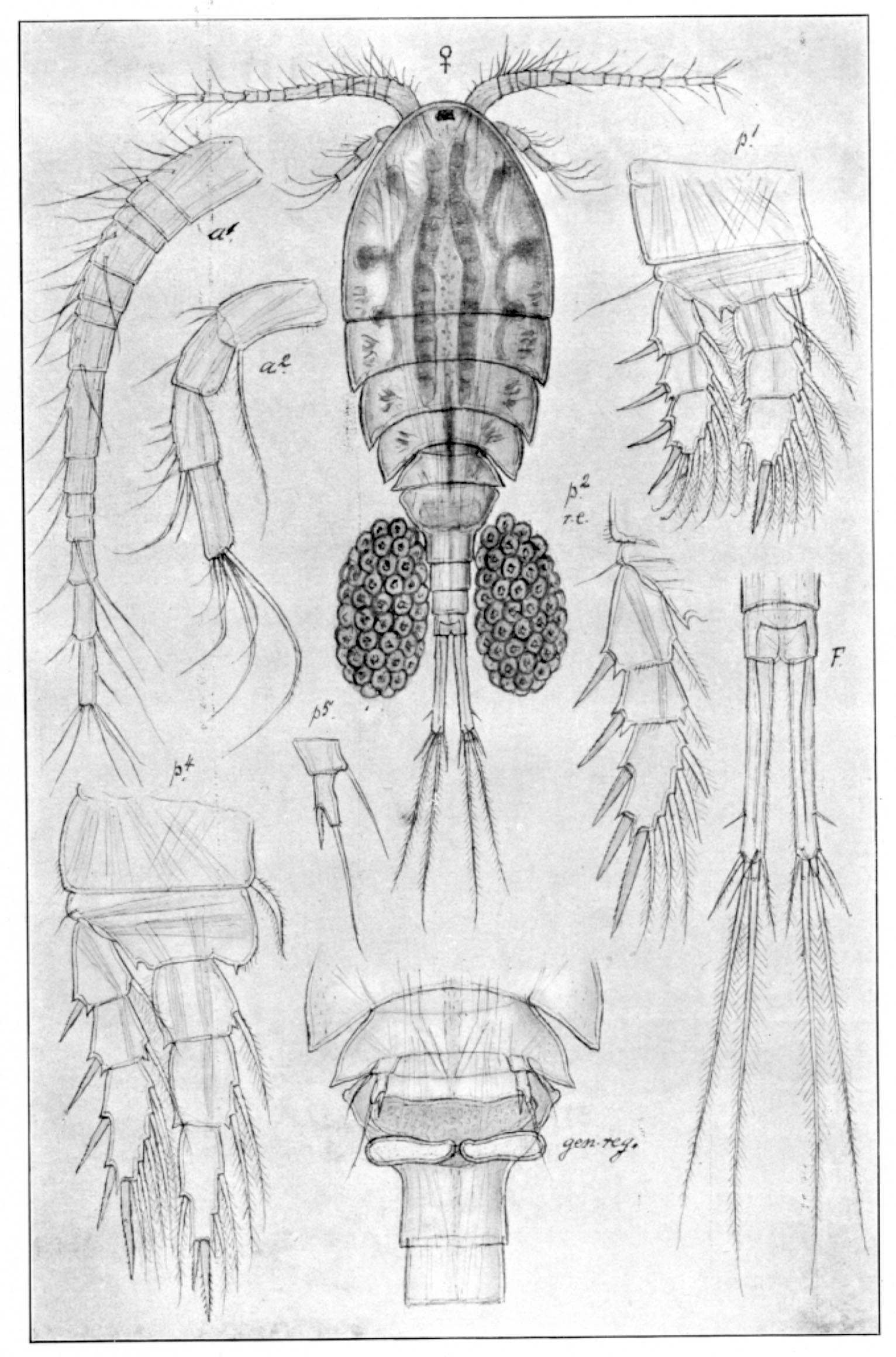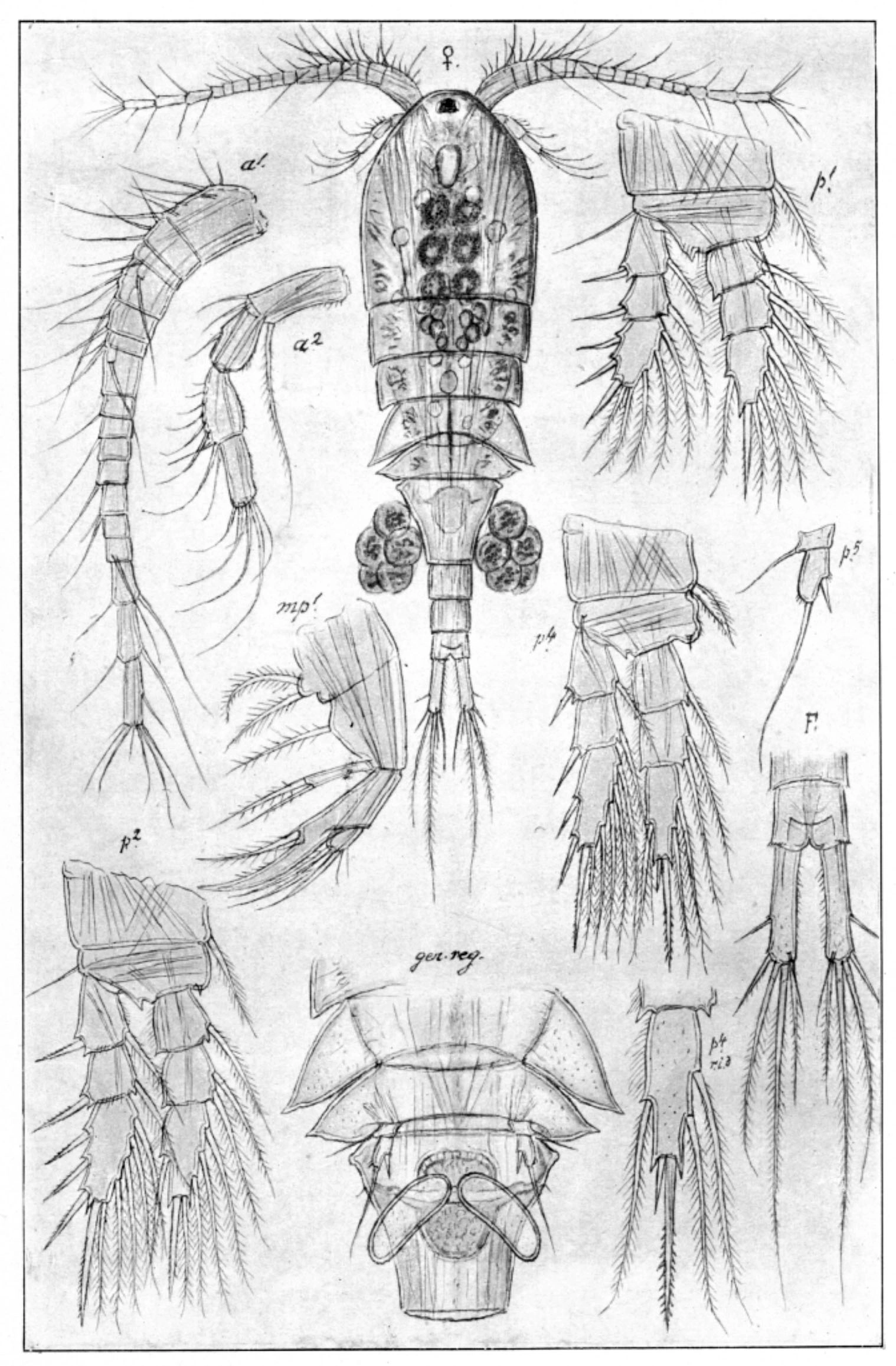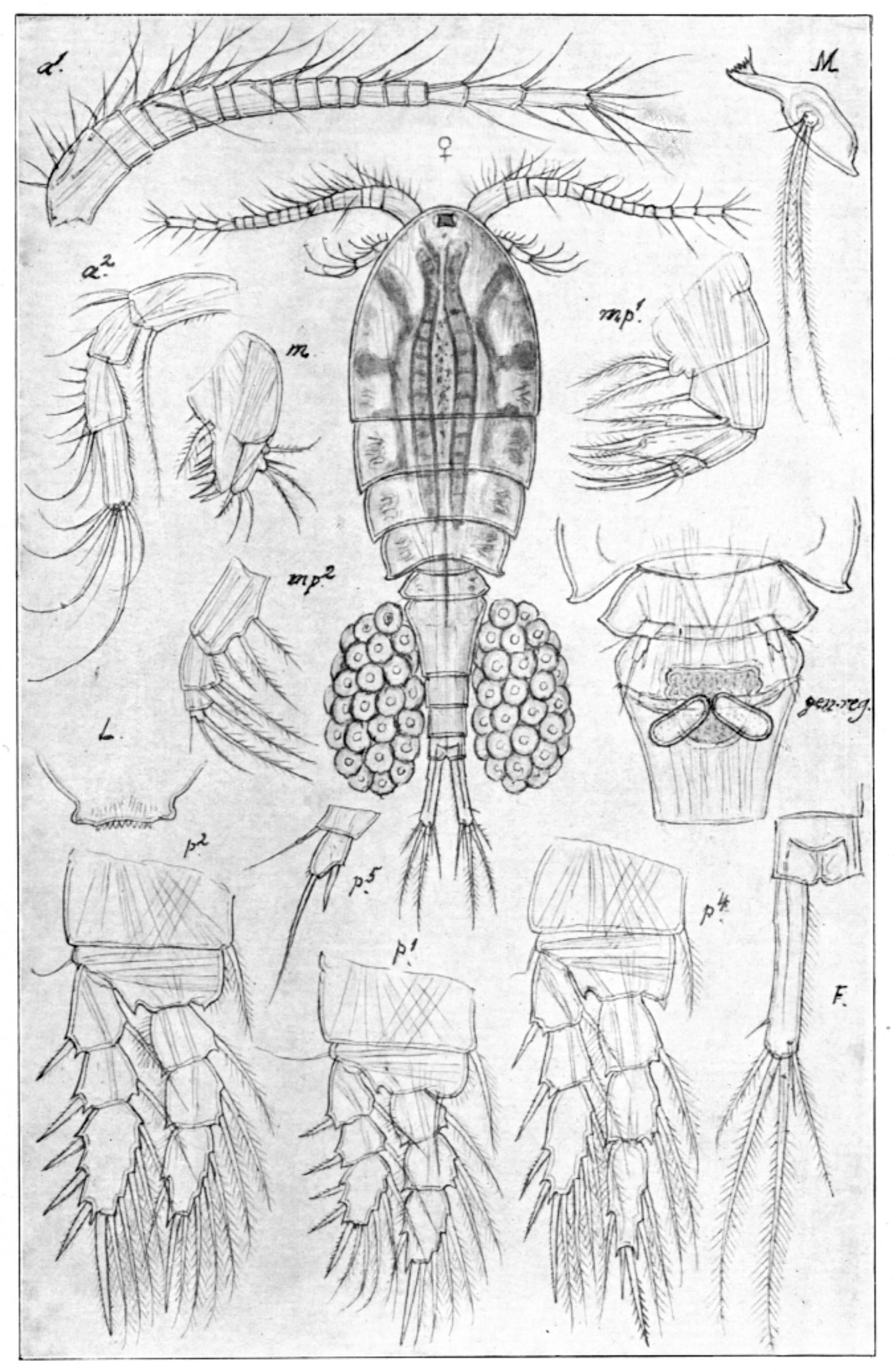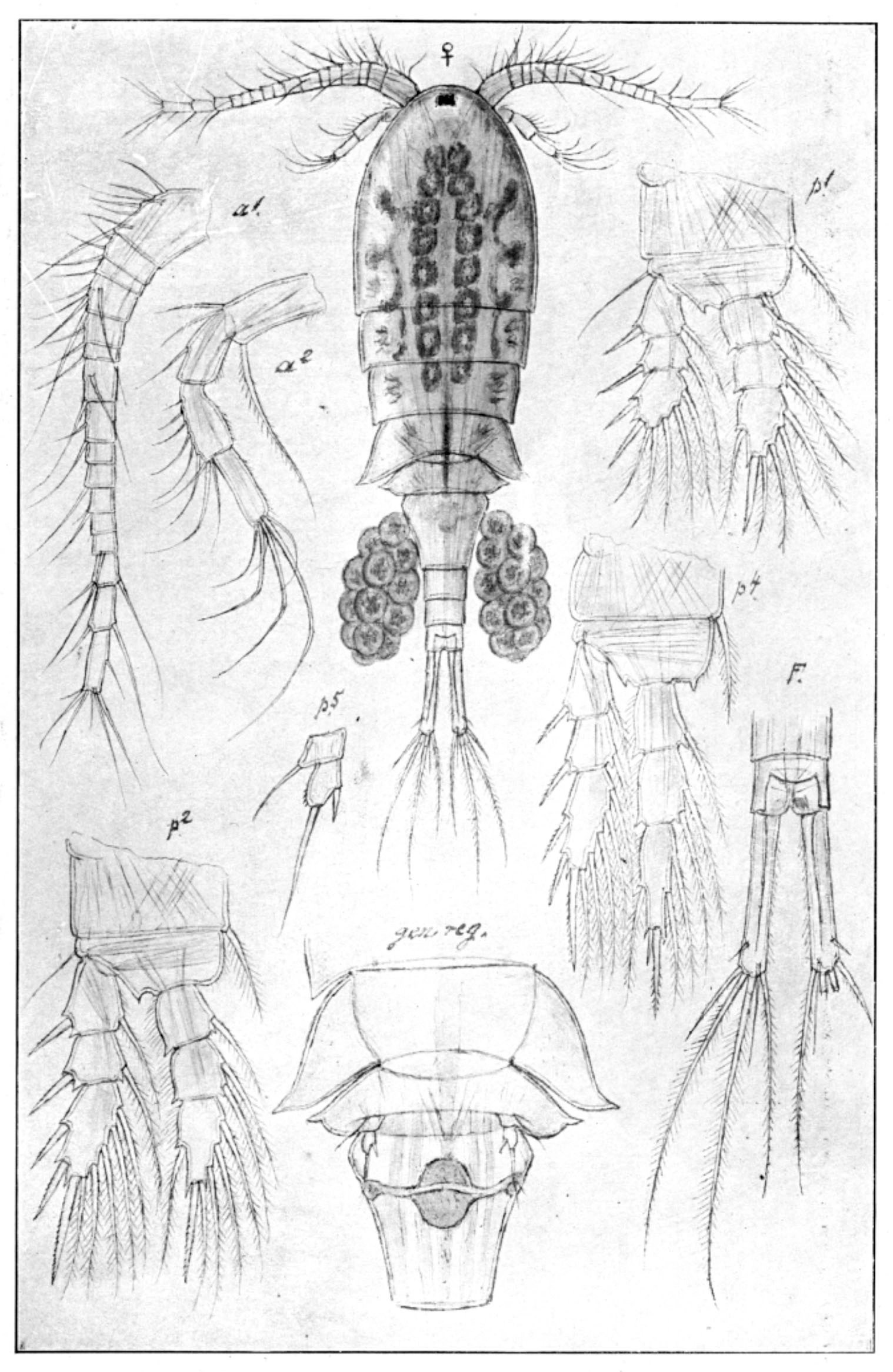Cyclops lacustris
Cyclops lacustris lives as a true limnetic form and the majority of records is from lakes within the catchment of Haldensvassdraget. Cephalothorax is not protruded at all, and it is highly pellucid, with a faint bluish or greenish tinge.
Key characteristics
Cyclops lacustris (female)
The body of Cyclops lacustris is quite slender, and is distinguished from its closest relatives by the appearance of the lateral part of the cephalothorax which is not protruded at all. Its furca has the same length as C. scutifer and C. strenuus, but differs from these species because the two branches are more diverged. C. lacustris is highly pellucid, with a faint bluish or greenish tinge.
Female: Length 1.5–2.1 mm
Male: Length 1.3 mm
Ecology and distribution
G.O. Sars found C. lacustris in two lakes in Norway, respectively Lake Tyrifjorden and Lake Mjøsa. It is still found in the latter which is situated 123 m a.s.l. and is the largest lake in Norway (36 280 da). In the last decade C. lacustris has been found in five more lakes, four of them within the catchment of Haldensvassdraget. It lives as a true limnetic form together with other midwater forms, being generally found swimming around close to the surface of the water.
| Vitenskapelig navn | < 4,5 | 4,5 - 4,9 | 5,0 - 5,4 | 5,5 - 5,9 | 6,0 - 6,4 | 6,5 - 7,0 | 7,0 - 7,4 | > 7,5 |
|---|---|---|---|---|---|---|---|---|
| 0 | 0 | 0 | 0 | 1,2 | 0,2 | 0,4 | 0 |
| Vitenskapelig navn | < 1,0 | 1,0 - 1,4 | 1,5 - 1,9 | 2,0 - 2,9 | 3,0 - 3,9 | 4,0 - 4,9 | 5,0 - 6,9 | 7,0 - 9,9 | > 10,0 |
|---|---|---|---|---|---|---|---|---|---|
| 0 | 0 | 0 | 0 | 0 | 0 | 3,2 | 0 | 0 |
| Vitenskapelig navn | < 0,01 | 0,01 - 0,09 | 0,1 - 0,9 | 1,0 - 9,9 | 10,0 - 99 | 100 - 999 | > 1000 |
|---|---|---|---|---|---|---|---|
| 0 | 0 | 0 | 0 | 0 | 0,2 | 4,9 |
| Vitenskapelig navn | < 100 | 100-299 | 300-499 | 500-699 | 700-999 | >1000 |
|---|---|---|---|---|---|---|
| 0,2 | 0,9 | 0 | 0 | 0 | 0 |
